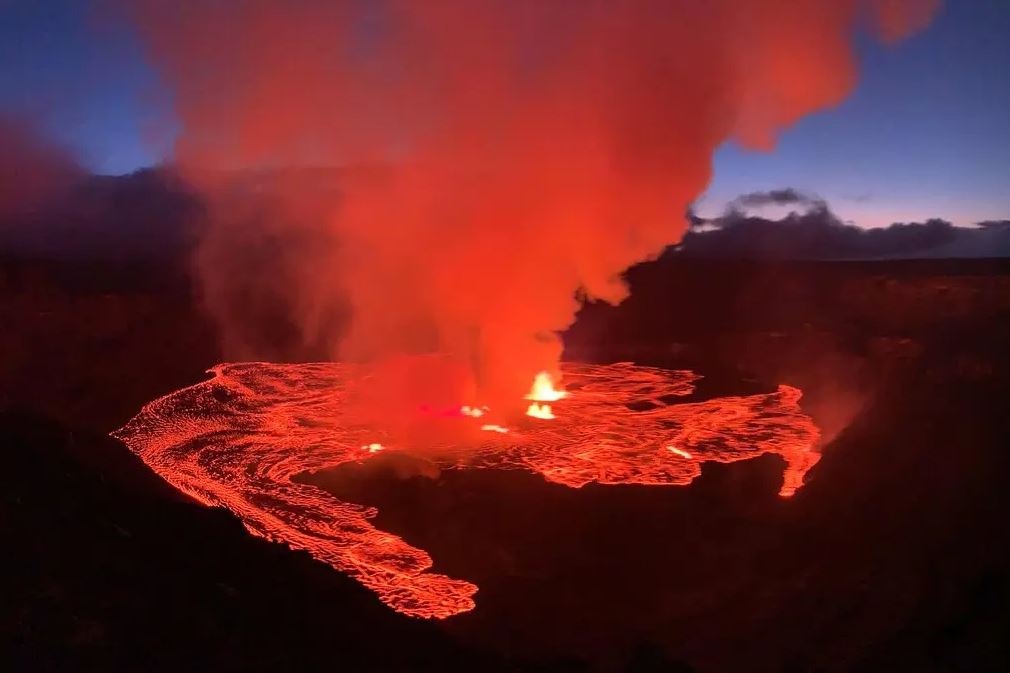Officials said that early Wednesday morning, Kilauea, the Big Island of Hawaii’s youngest and most active volcano, erupted, sending fountains of lava gushing upwards before pooling and spreading over its top.
An hour later, the crater floor was covered in a beautiful black and orange web made by the lava. Live footage from the morning revealed bubbling lava that was starting to solidify on the surface.
The observatory issued a statement saying that “as this eruption and associated hazards are evaluated,” the alert level for Kilauea will be raised from “warning” to “watch,” and that “the opening phases of eruptions are dynamic.”
The observatory reported that the eruptive activity was contained inside Halema’uma’u, the volcano’s main crater, and posed no significant risk to life or property. According to Dr Hon, the only danger is from the volcano’s gas emissions.
Webcams weren’t the only ones to capture the eruption. The quick release of heat, ash, and sulphur dioxide into the atmosphere was caught by a satellite operated by the National Oceanic and Atmospheric Administration.
Kilauea is a pretty typical shield volcano, called for its gentle slopes that resemble a shield resting on the ground, and was initially developed underwater around 280,000 years ago, as reported by the National Park Service.
Kilauea is Mauna Loa’s younger, smaller twin, and it started erupting last year for the first time in four decades before slowing down in December. Mauna Loa is the largest active volcano in world. As reported by the observatory, there has been “no significant activity” at Mauna Loa throughout the last month.
From 1983 until 2018, when it unleashed its most devastating eruption on record, Kilauea was constantly erupting. According to Dr. Hon, Kilauea “has been kind of relaxed” following its eruption in 2018, during which “so much lava was lost from the summit.”
Dr. Hon noted that the eruptions began “rather abruptly,” with as little as an hour’s warning. But Kilauea has been sending out signals in the previous month.
At first, the volcano’s inclination grew “quite dramatically,” as Dr. Hon put it. The frequency of earthquakes thereafter increased. However, this did not provide sufficient warning of an impending eruption.
The shaking and swelling became worse on Tuesday night. Scientists often interpret a 3.5-magnitude earthquake followed by “a rapid fire” of low- and high-frequency quakes as magma cracking its way to the surface, which is what the observatory observed at about 3:30 a.m.
Years after the 2018 eruption, he added, the volcano “needed to be pumped back up,” and “the first place that happens is in the summit.”

